When I was a child, I loved Richard Adams’s Watership Down. It sat high on my bookshelf, satisfyingly thick, like a grown-up book, its illustrated dust jacket worn from use. I can still see it, though I’ve forgotten nearly every detail of the story contained within. All I remember is the feeling the book gave me: the thrilling sense of a secret world below the down, of peril faced with courage.
I’ve carried this feeling with me for decades, timeless. So it was a shock, a few years ago, to read an article methodically articulating all the ways that Watership Down fails to imagine the female rabbits as anything other than furry baby factories. The version of the book in my head was not timeless after all, but firmly rooted in the fallible past. We grow up but the books we loved as children do not.
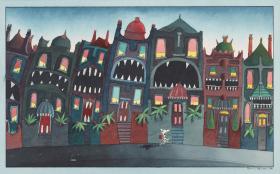
Picture books in Australia have changed dramatically in recent decades. Some of these changes have been brought about by advances in technology. Australian picture books had their first great flowering around 50 years ago, when cheap colour printing became available in Asia. ‘In the 70s there was a bit of a revolution in printing,’ says Margaret Hamilton, the trailblazing publisher at the forefront of this boom. ‘That started publishers experimenting with picture books.’ New topics were explored and new formats introduced.
But British books still dominated the market when Ted Prior walked into Hamilton’s office at Hodder & Stoughton, Australia. He had an idea that he thought could become a television series. She saw the simplicity of the popular Mr. Men stories by the English author Roger Hargreaves and convinced Prior to turn his idea into a book in the same cheap, small, paperback format. There are now more than 30 titles in Ted Prior’s Grug series, which celebrated its 40th anniversary recently. They have sold more than three million copies. A few years after this, Hamilton launched Margaret Hamilton Books, with the aim of publishing Australian picture books — of the highest quality — for Australian children.
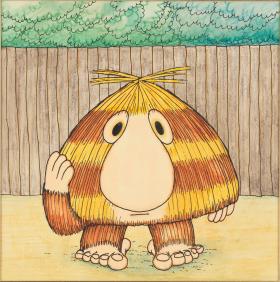
Design has long been a key ingredient in any picture book’s success but in our image-driven times, it’s even more important. People with backgrounds in art or fashion have come into the industry, and book design has reached new heights. ‘Our aesthetic, for better or worse, has certainly stepped up,’ says Macdonald.
The most significant recent changes in picture book publishing, however, are around content. Sarah Morley is curator of the State Library’s exhibition Imagine ... the wonder of picture books, which showcases some of the most beautiful and interesting picture books and artworks in the Library’s collection and beyond. She notes that the most important recent development in picture-book publishing — in all children’s publishing — is a move to better represent diversity in all its forms: diversity of races, of abilities, of genders and of family structures.
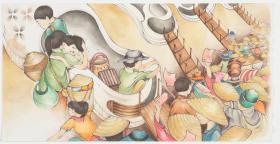
The most exciting development in this push towards diversity is the boom in Aboriginal and Torres Strait Islander stories. Magabala Books, based in Broome, is the trailblazer, putting out gorgeously illustrated titles by Sally Morgan, Ambelin Kwaymullina, Bruce Pascoe and Vincent Namatjira, among others. The press has been publishing First Nations stories for over 30 years, but Rachel Bin Salleh, publisher at Magabala, says the books’ reception has changed significantly. ‘The only thing for us that has changed is that Australia is now much more willing to listen to First Nations stories,’ she says. ‘It’s reckoning with its past.’ The big publishers have also brought out books by prominent Indigenous authors and illustrators including Adam Goodes, Bronwyn Bancroft and Thomas Mayor. And these books sell. ‘That’s something that’s new, that people will buy Indigenous books as special gifts,’ says Vivas. ‘They’re more mass market now, which is so fantastic.’
In her Stella-prize winning book, Dropbear, the poet Evelyn Araluen reflects on her complicated relationship with the picture books she read as a child. Born on Dharug country, of Bundjalung descent, she grew up reading May Gibbs’s books about the gumnut babies who ran from the menacing Banksia Men. She read Dot and the Kangaroo, where the main characters ran from the bunyip and Aboriginal hunters were described as violent and savage. As a child, she was mesmerised by these stories. ‘I enjoyed the lands they peered into, the adventures they described,’ she writes. It was not until years later, when Araluen went to university and discovered post-colonial theory, that she looked back on these books and saw their othering of the scary, black figures in the bush. She saw the way they linked white children to the landscape, conveniently eliding real Aboriginal bodies, slaughtered and dispossessed. Now, it seemed her parents had been hoodwinked by these books. And yet, she writes, to think this is to ignore how hard her mother and father worked to make sure their children had access to the books that would put them on the path to literacy. ‘It was an easy sort of antagonism, where I could see my parents as the victims of a colonial condition, and not agential selves who had sacrificed everything to give us something. A tidy narrative that forgot the decades of work they did writing curricula for Aboriginal education across New South Wales, creating programs to bring Elders into schools, developing resources for communities to address drug abuse through cultural learning and safety, going to meetings and bushcare, picking up the pieces, being there to remind and remember.’
Just as her parents intended, these books opened up the world of words to Araluen. Without them, would she have gone on to read theory at university? Would she have become a poet?
Macdonald identifies two other main trends in picture book publishing: an increased interest in sustainability and the natural world, as our fears for its destruction grow; and a rise in books on what might be termed wellbeing. Under this umbrella he includes books on everything from mindfulness to positivity and consent. Riley agrees that mental health and wellbeing is a growing focus, pointing to books such as Anna Walker’s Mister Huff, which is about dealing with complex emotions including anxiety, and a series of picture books she co-published with Smiling Mind, makers of the popular meditation app.
Each of these three areas — diversity, climate change and mental health — raises big issues with kids, from the destruction of the planet to the treatment of refugees and racism. Picture books once shied away from these topics but now they are diving in. A book like Armin Greder’s The Inheritance, for instance, recently shortlisted for the Children’s Picture Book of the Year in the Children’s Book Council of Australia awards, is pitched at readers up to 15 years and through its haunting illustrations and minimal text tackles corporate greed and environmental devastation. ‘Just in the last five years, so much has changed in the world,’ says the Library’s Sarah Morley. ‘And helping little people to understand those issues — and many of them are really confronting — is important. I think picture books are so powerful because they can do that in a really gentle way.’
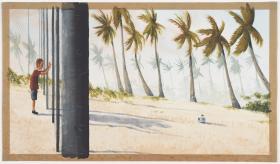
When Clarke was growing up in Kellyville, in Western Sydney, she loved a book called Liza Lou and the Yeller Belly Swamp by Mercer Mayer. She could find few books with Black faces in them like her own, and this one resonated. It was about a little African-American girl who lived on the edge of a swamp with her mother, and had to run errands like delivering the washing her mother had cleaned. She ran through the swamp each time, outwitting the swamp monsters.
In Clarke’s imagination, Mercer Mayer was an older African-American woman. It was only later when Clarke was older, trying to track the book down for her kids, that she discovered Mayer was a white man. This didn’t make the book offensive to her. ‘I think there is some critique in the fact that he was able to get this book published, at a time when probably what he should have been doing is helping an African-American woman to get her book published,’ she says. ‘But the book is just written so beautifully. It’s really just a story where the protagonist happens to be a little Black girl.’
So she bought the book and read it to her kids, and then they had a discussion about the ethics of a white author telling this story.
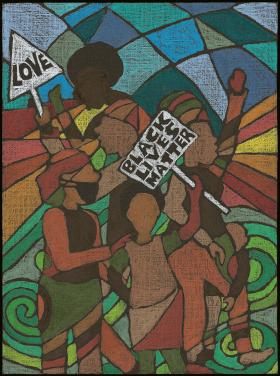
Picture books also matter because they are a child’s window onto the world. Seeing people who look like them, and people who don’t, helps develop identity and a sense of belonging. For all the efforts towards diversity, many Australian children are still not sufficiently represented in our picture books. A recent analysis of the books shortlisted for the Children’s Book Council of Australia Early Childhood Book of the Year award between 2001 and 2020 found that while there was a roughly equal gender split in their protagonists, 89 per cent of the human characters were white. None of the main characters were Asian, Black or Middle Eastern. Seven per cent of all characters were Indigenous, but appeared in only 5 out of 118 books. As Clarke discovered when she went to the library to get a book for her young daughter, she was more likely to find a main character who was a talking penguin than one with skin colour like her own.
One irony of the internet age is that while the choice of books is almost unlimited, what people actually buy has narrowed, particularly since the arrival of Covid. Options online are so overwhelming that people resort to Top 10 lists to find a way through. Similarly, many picture books are now sold in stores such as Kmart and Big W, where the range is inevitably smaller than in a shop dedicated to books. This means that juggernauts like the Bluey series dominate: more than three million Bluey books have sold since they were first published at the end of 2019.
This might be a welcome development. Perhaps they widen readership, because the familiarity of the characters makes people who might not otherwise buy books pick them up. But it means that even when publishers put out more diverse books, it can be harder to get them into the hands of readers in large quantities. ‘Certainly the market is dominated by fewer books at the moment,’ says Macdonald. Last year, Magabala Books sold nearly 300,000 books, its best year ever. But it’s still a fraction of what Bluey did.
As a child, Clarke had only one Snugglepot and Cuddlepie book in the house and she didn’t like it much. ‘I don’t think that was to do with any kind of racial awakening as a kid, it was just that they were so boring,’ she says. She only thought about it again when she was in Kmart recently and saw a series of board books featuring May Gibbs’s characters. Clarke thought maybe they were simplified versions of the original, amended to take out any offensive content. ‘Then I opened the first book and went, “Oh! The Banksia Men are still in the book.”I think that has been actually my most surprising moment of the last few years in children’s books, of thinking, “Wow. As much as we’re diversifying, and as much as we have Magabala Books, for example, filling this void in a really extraordinary way with excellent First Nations kids’ literature, this other stuff, because it makes money, it will still never go away.”’
Bin Salleh is clear on how to fix this: an industry that remains overwhelmingly white needs to embrace publishers from diverse backgrounds. At Magabala, they don’t look for publishers via the usual routes. Instead, she’s proud to employ three First Nations cadets with a wide range of life experience, family experience and deep cultural and community values. ‘I can teach them publishing but I can’t teach White people Black things,’ she says. Her challenge is for the industry to similarly value the insights and knowledge brought by people whose lives are lived outside traditional white structures.
That way, perhaps, we’ll see the next great flowering of Australian children’s books.
Catherine Keenan is a freelance writer and co-founder and executive director of Story Factory. The Library’s Imagine exhibition is open until Sunday 9 July 2023.
This story appears in Openbook winter 2022


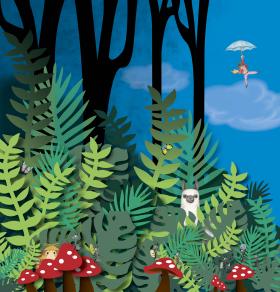
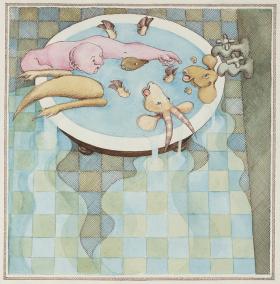
![Hope you're still going strong! [tennis] c. 1916, colour postcard by May Gibbs](/sites/default/files/styles/max_width_280/public/landing-pages/tiles/home-page/full-screen-slider/maygibbs_tennis_gum_nuts.jpg?itok=5vUkOe5l)